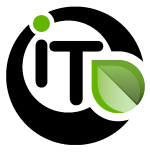4. Brief description of use example (up to 150 words): Increasing yields, the quality of agricultural produce and reducing costs are important ways to increase a farmer’s income. In this example, an American farmer on a large farm uses drones to monitor his fields with different bird’s eye views, whereas typically a farmer examines fields laterally, but this is only one perspective and is time-consuming. With a laptop and radio modem or other remote-control devices, the farmer can control the direction and altitude of the drone and its types of cameras to investigate different crops and sections on his farm to obtain more precise information on field conditions, including localized infestations and other types of field stress. Some drones can spray the localized areas with water, fertilizer and pesticides, which can reduce costs on water, fertilizer and pesticides as well as produce higher and better yields. He can also share his drone and its findings with other farmers.
5. Economic area of this use example: Agriculture
6. Role(s) of the person(s) using the digital technology: Farmer
7. Digital technology used: Drone or unmanned aerial vehicle (UAV); laptop with radio modem
8. Software applications (if applicable): Specialized software customized for drone use in agriculture
9. Purpose(s) for digital technology use: Collecting precise and fine grain data on growth conditions in various parts of a large farm land, to make more accurate and cost effective farming operations such as precision watering, fertilizing and pest control using drones to lower costs and increase crop quality and yields.
10. Key actions/interactions/transactions in use example:
10a. Actions (without involving other parties): The farmer needs to select the appropriate type of UAV and camera(s) (e.g. thermal; near-infrared; visible) for his needs, configure the UAV’s aerodynamics and camera and launch a UAV for different functions. The farmer manually controls the movement of the drone with a joystick or with a laptop equipped with a radio modem, and controls the camera(s) to inspect borders and fences. The drones can track field conditions at altitudes much lower than possible for a fixed wing aircraft, which can be varied dependent on the crop (e.g. blueberries; potatoes) to identify areas of infestation or other stress. The farmer can use a drone to spray different amounts of pesticide, fertilizer and water on different sections of a field. A farmer can share aerial photographs with other farmers to identify infestation.
10b. Interactions (with other parties): A farmer can show photos of fields to other farmers or share real-time observation data collaboratively and simultaneously.
10c. Transactions (materials/money exchanged with others): Not applicable
11. Additional comments and use example implications: Total land available for agriculture is decreasing while human population is increasing so agriculture must become more productive. UAV use requires an economy of scale. It is a huge capital investment, and is most cost efficient with large farms, which reap the greatest savings and are able to pay for the cost of technologies in two years. Drones could also operate cost effectively with cooperatives or groups of small-scale farmers. Widespread drone use is impossible because of existing air traffic regulation. Drones and training must be available.

